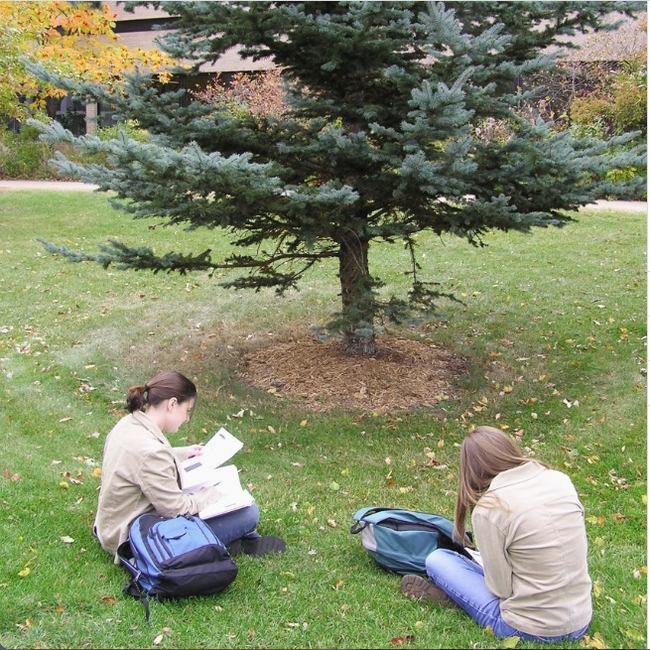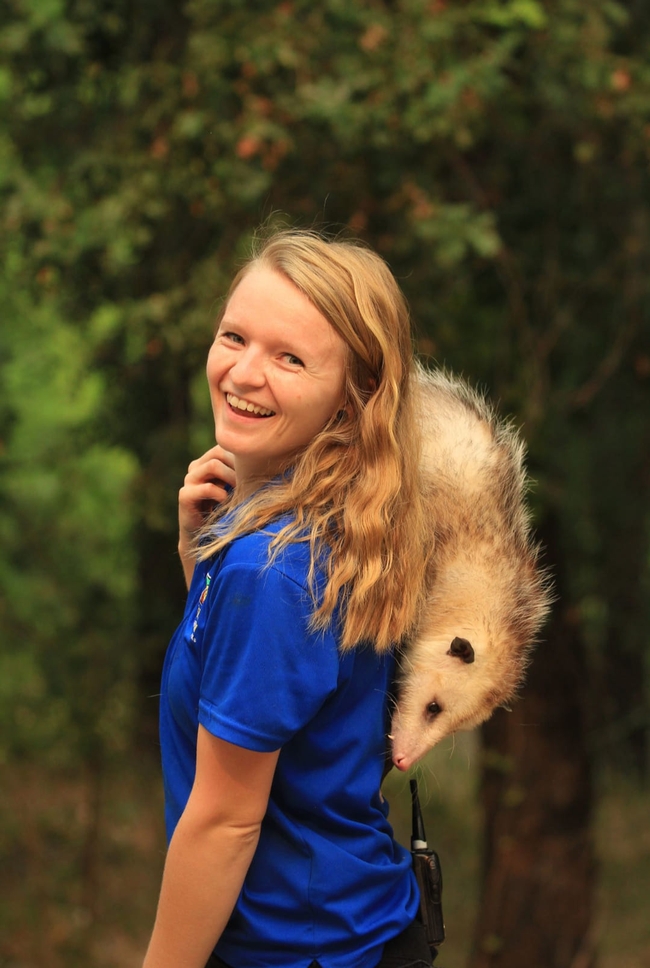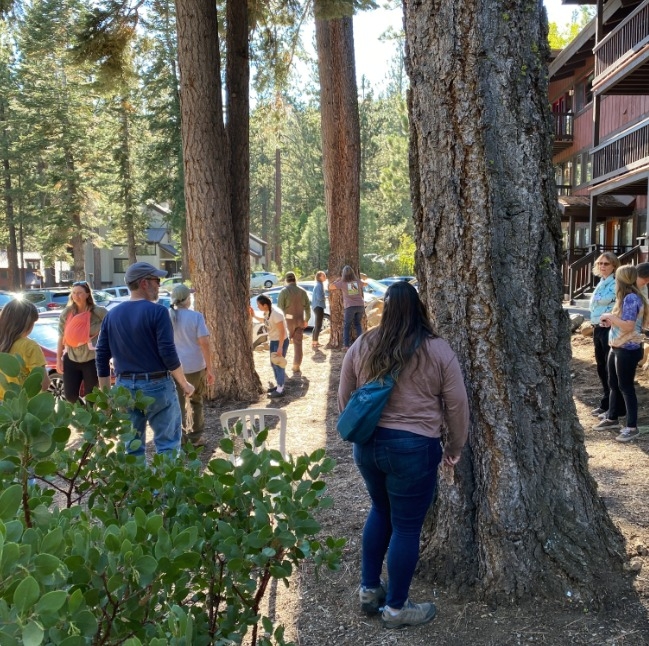Posts Tagged: tree
Bee Bearding in California's Excessive Heat
Have you read the excessive heat warnings and the guidelines to prevent heat illnesses as triple-digit temperatures hold us hostage in Yolo and...
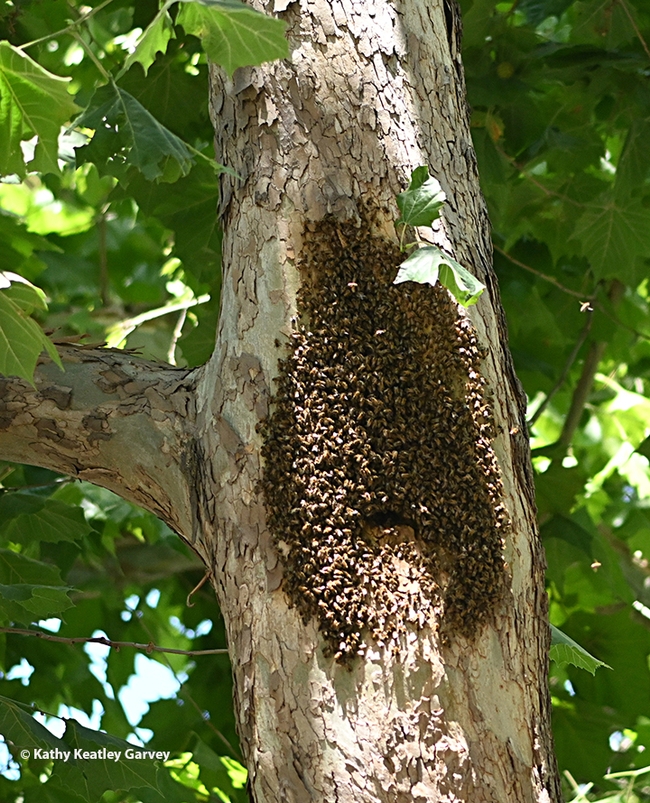
As temperatures soar, feral honey bees engage in bearding to reduce the heat load inside. These bees are in a sycamore tree on the UC Davis campus. (Photo by Kathy Keatley Garvey)
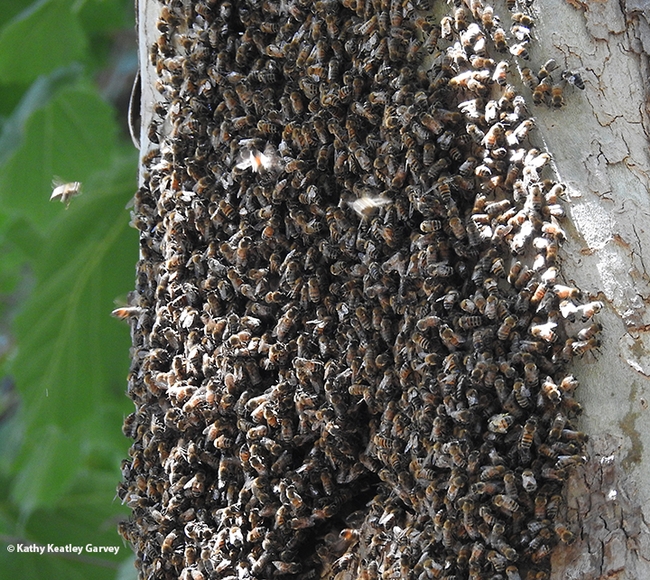
Honey bees buzz in and out of their colony inside a sycamore tree on the UC Davis campus. Bee bearding helps reduce the heat load inside. Honey bee colonies require a temperature of 94 degrees for the developing brood. (Photo by Kathy Keatley Garvey)
Squirrel Vs. Bees: Sorry, No Vacancy!
Call it “The Battle Over a Tree Hollow." Feral bees have occupied—and abandoned—a sycamore tree cavity in a Vacaville neighborhood...
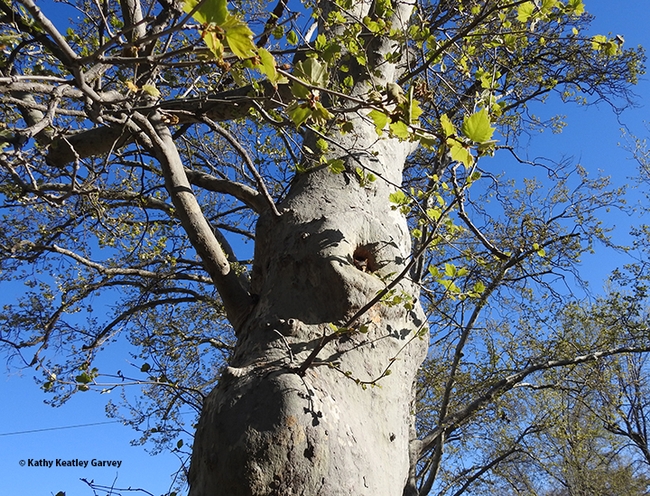
Look closely and you can see a squirrel occupying a small hollow or cavity in a sycamore tree. The cavity has been home to feral bees for at least two decades. (Image taken in Vacaville by Kathy Keatley Garvey)
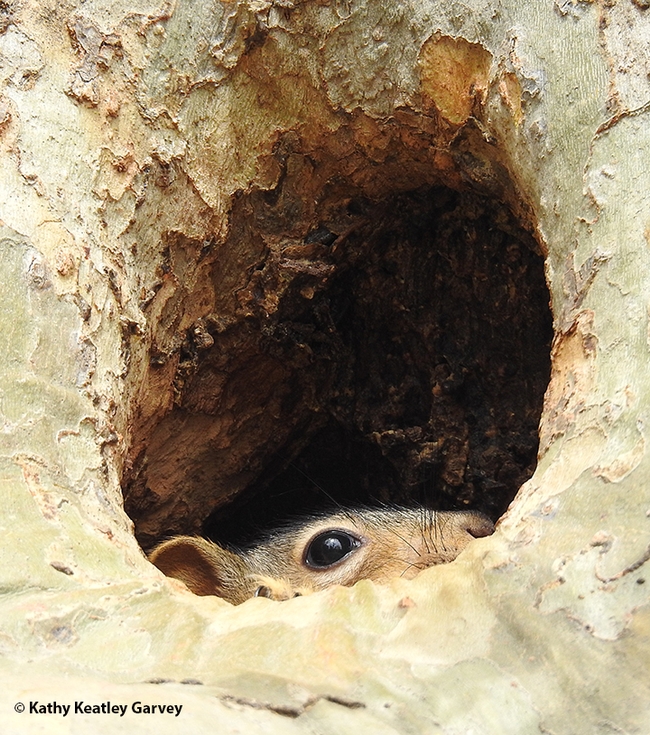
What's all that noise about? Can't a squirrel get some sleep? (Photo by Kathy Keatley Garvey)
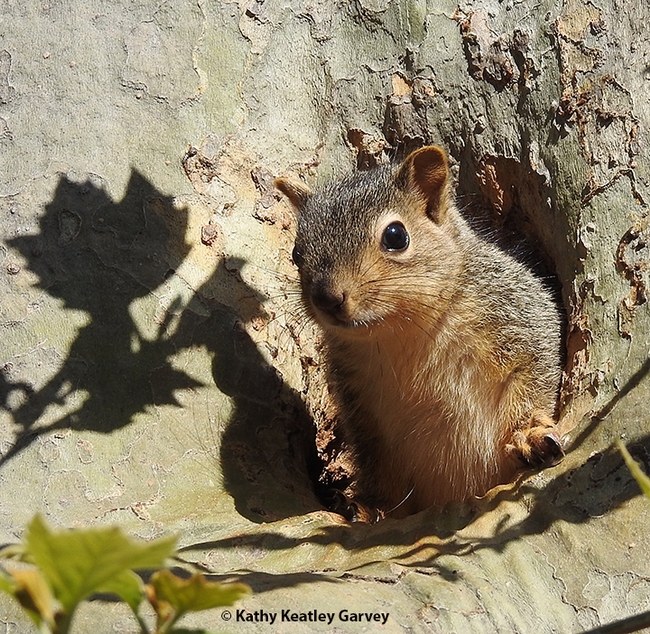
The squirrel pokes his head out of his home, his sleepy hollow. (Photo by Kathy Keatley Garvey)
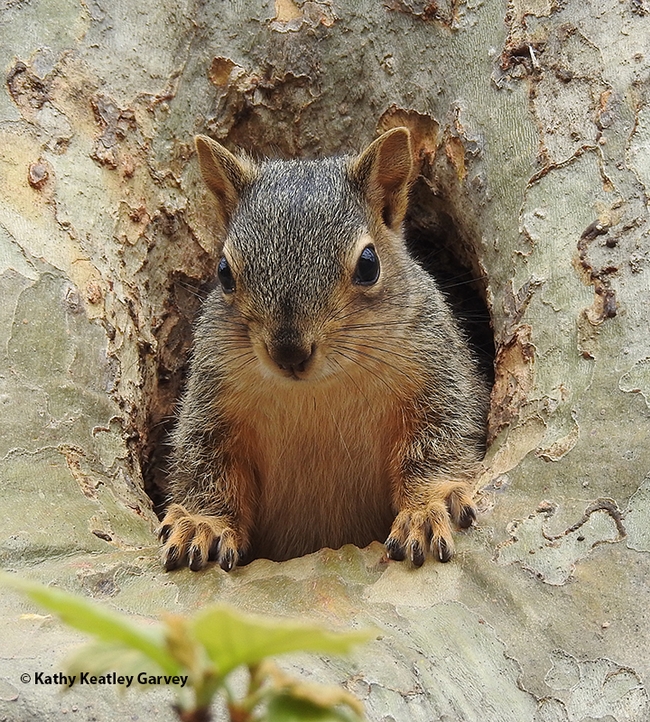
Occupied! No vacancy! The squirrel is aware that bees are circling, trying to move into "his" hollow. (Photo by Kathy Keatley Garvey)
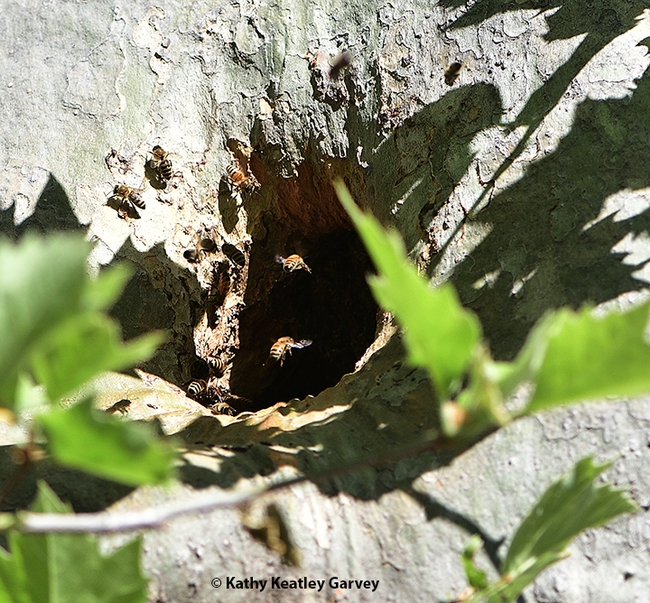
With the squirrel gone, honey bees quickly move into the hollow. (Photo by Kathy Keatley Garvey)
Feral Bee Colony in Kenya: Nothing Short of Incredible
"EVERYTHING that colonies do when they are living on their own (not being managed by beekeepers) is done to favor their survival and their...
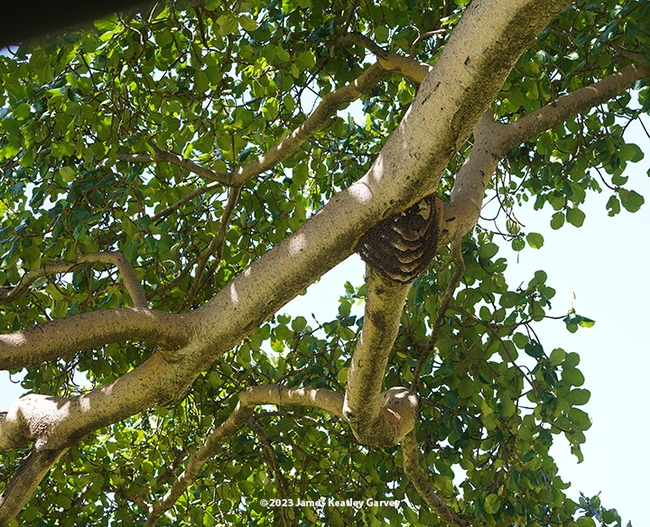
A feral or wild bee colony in a fig tree in the Maasai Mara National Reserve, southern Kenya. (Photo by James Keatley Garvey)
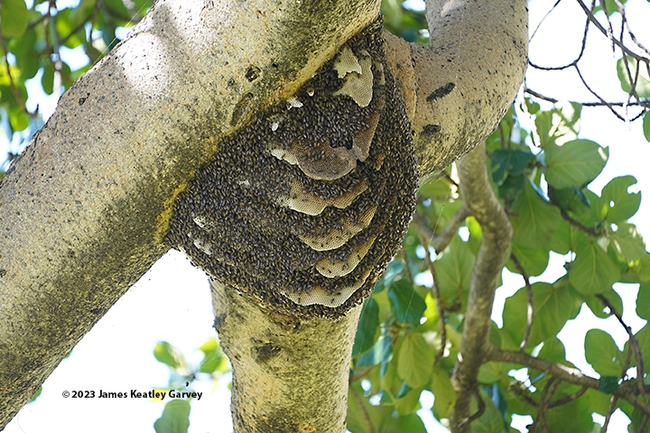
Close-up of a feral or wild bee colony in a fig tree in the Maasai Mara National Reserve, southern Kenya. (Photo by James Keatley Garvey)
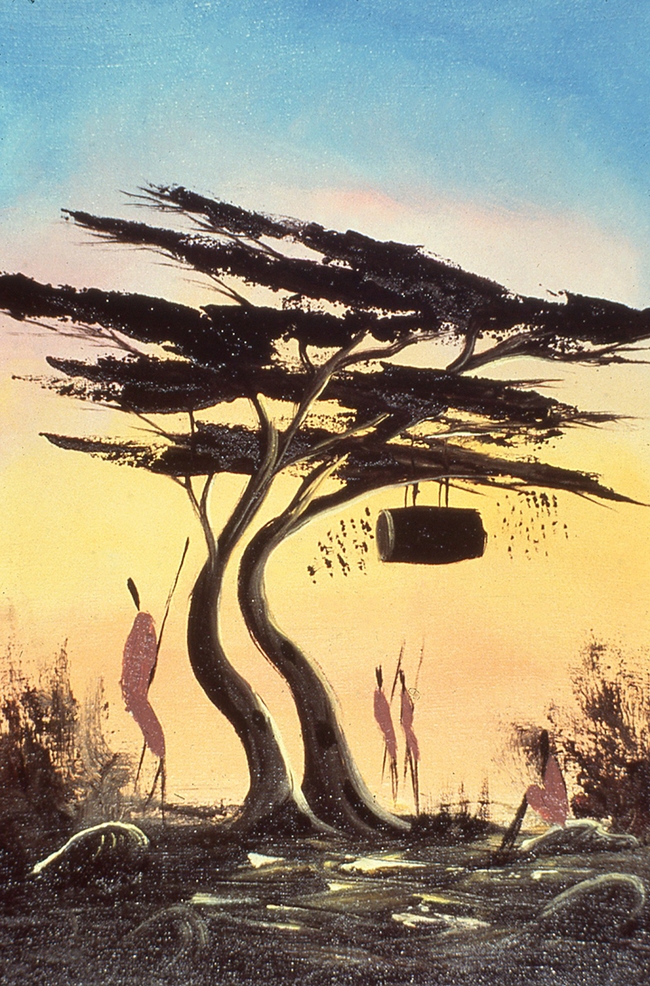
This image is of a painting of a log hive that Cornell professor Roger Morse purchased in a market in Kenya in the 1970s. (Photo courtesy of Thomas Seeley)
Project Learning Tree: Shaping the future of California forests
On this International Day of Forests, we at UC Cooperative Extension Forest Research and Outreach invite you to celebrate the future of California's trees with us. Considering the recent news coverage regarding tree mortality in California, we want to instead view this subject through a lens of hope. For it's not just the news outlets witnessing the extent of forest die-off: children, especially those in forested communities, are seeing the effects of drought, wildfire, and fire suppression policies in real time.
Project Learning Tree is a national education program leading the next generation to witness and then act on these changes. Children are the future of our forests, and we think the efforts of Project Learning Tree are a cause for celebration, don't you?
Last month, Californians may have noticed a marked uptick in the news coverage of the state's forests. Local, state and national news outlets all reported on the startling approximation of 36 million trees that perished between 2021 and 2022. This number, gleaned from USDA Forest Service data, is a startling jump from the 9.5 million trees that perished the year before. The future of California's forests does not have to look like this, with large fluctuations and ever-rising numbers of dying trees. Right now, it's not easy being a tree. In 10 or 20 years? We're hopeful that the situation is different.
Project Learning Tree (PLT), stretches across the nation to connect students to forests, even if they live miles away from one. Jonelle Mason, the PLT coordinator for Northern California region, provided more insight into the program's purpose through a sentiment many may be familiar with: “To quote Jane Goodall, ‘Only if we understand, will we care. Only if we care, we will help.'” Project Learning Tree is one piece in the future of forest stewardship, and as Jonelle sees it, “Forming forest-education generations creates passionate advocates. People can't save what they don't know about.”
A point touched on by nearly all news outlets covering tree mortality was the centuries of fire suppression practices and its ripple effects that amplify drought and wildfire damage. Students in California are aware of natural disasters affecting forests and forested communities, but not necessarily the causes.Mason posits that in closing that knowledge gap, PLT can “cultivate environmental defenders [who] will ultimately push us in the right direction.”
A crucial aspect of Project Learning Tree is that it exists as a continuing education program, meant to follow students from kindergarten to senior year of high school. Each year of learning builds upon the last, yet the topics are given nuance and depth even at the elementary school level. For instance, PLT's flagship K-8 curriculum gives second grade teachers the tools to communicate ecosystem services, plant structure and natural resource cultivation. High school teachers following the “Focus on Forests” education guide will find avenues to introduce concepts like environmental policy, and will help students understand the difficult decisions that many forest landowners face.
It does indeed give us a reason to celebrate the future. Young people are more active in the conversations surrounding the environment and climate change, and are aware that something must be done to protect the natural resources they have left. It's vital to translate that passion and interest into true learning, where a classroom can become the space for developing ideas for what can be done about our state's forests. Mason is quick to point out the core tenant of PLT that makes it unique: “Teaching students how to think, not what to think, about environmental concerns.”
Project Learning Tree presents concepts to students and gives them the tools to think critically through the many fields that touch forests, from the natural sciences to philosophy. California's youth has a vested interest in protecting and managing their forests, and programs like PLT give us hope that the interest can truly be translated to action.
If you are interested in bringing Project Learning Tree to your school or home, you can contact Mason at jmason@ucanr.edu.
UC Davis Biodiversity Museum Day Includes Arboretum Tour of Texas Tree Trials
Entomologists, horticulturists, botanists, anthropologists, paleontologists, nematologists, biologists, ornithologists and other scientists are...
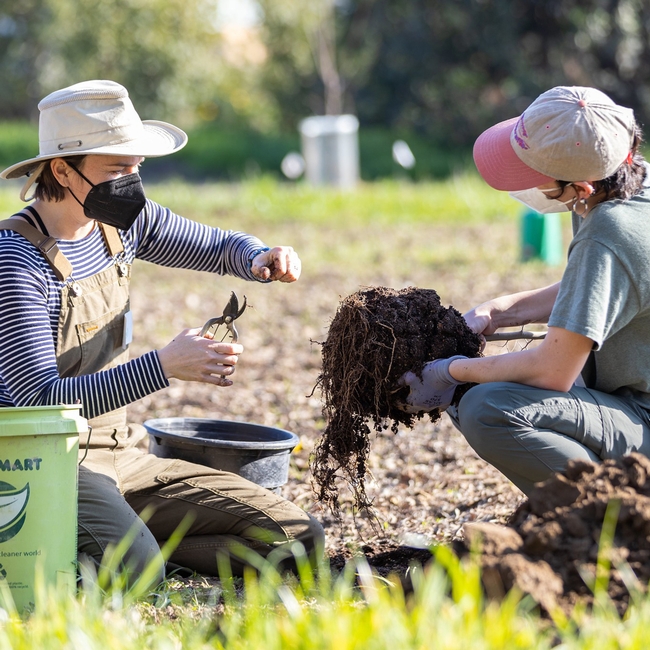
Urban Tree Stewardship (UTS) Learning by Leading™ Staff Mentor Abbey Hart (left) with UTS student team member Laia Menendez Diaz (right). (Photo courtesy of the UC Davis Arboretum and Public Garden)
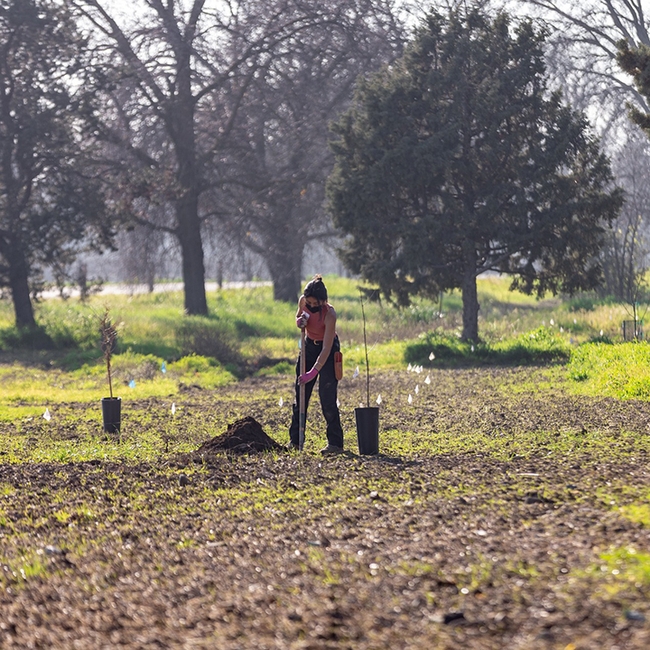
Urban Tree Stewardship (UTS) co-coordinator Alicia Aroche working in the Texas Tree Trials project in the Arboretum and Public Garden. (Photo courtesy of the UC Davis Arboretum and Public Garden)


